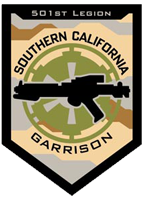Full-facepiece APRs offer more protection (factor of 50) than half face-piece APRs (factor of 10). The Employee Alarm Systems standard (29 CFR 1910.165) is also aimed at ensuring alarms are able to be perceived by all workers at a worksite, including those with physical impairments (see OSHA's 1990 interpretation of the standard). Receive alerts about emergencies and other important community news by signing up for the City of Santa Maria's alert program. On-site Consultation services are separate from enforcement and do not result in penalties or citations. Under this Annex, OSHA has the authority to provide technical assistance and support to local, state, federal, tribal, territorial, and insular area agencies. Establish procedures for further evacuation in case the incident expands. Keep "fire doors" closed to slow the spread of smoke and fire. Must NOT be used where oxygen levels are inadequate. The state police Special Emergency Response Team was joined by members of Pittsburgh Police SWAT and the State Attorney General's. Use tactile devices to alert visually-impaired workers (in addition to audible and visual devices). Used when the type of airborne exposure is known to be guarded against adequately by an APR. Do not re-enter the building until directed to do so by authorities. OSHA recommends that employers coordinate their action plan with other employers that share the same worksite. Know how many desks or cubicles are between their workstations and two of the nearest exits to escape in the dark, if necessary. Some businesses may require designated workers to remain behind briefly to operate fire extinguishers or shut down gas, electrical, and other systems or special equipment that could be damaged or create additional hazards to emergency responders (such as releasing hazardous materials) if left operating. Such releases may be either accidental or intentional. Go directly to the nearest fire- and smoke-free stairwell, recognizing that in some circumstances the only available exit route may contain smoke or fire. Many employers designate individuals as evacuation wardens to help move workers from danger to safe areas during an emergency. Stop your vehicle in the safest place possible and turn off the engine. Respiratory protection programs require fit testing and training for workers, medical evaluation and monitoring and selection of appropriate respirators (and cartridges, if required). If you experienced damage due to either the February/March Snow Event or March Rain/Flood Event, please . Specifically for CBRN events, there is additional guidance on respiratory requirements in OSHA's Safety and Health Information Bulletin on CBRN Escape Respirators (SHIB 03-08-29 (A). Methods for preventing unauthorized access to the site. LockA locked padlock OSHA encourages workers who suffer such discrimination to submit a complaint to OSHA. Storing original or duplicate copies of accounting records, legal documents, worker emergency contact lists, building plans, HAZMAT lists, and other essential records at a secure on-site or off-site location. Note that surgical masks are not designed or approved for protection against particulates or chemical vapors. School Emergency Plans. In many cases, local authorities will issue advice to shelter-in-place via TV or radio. Anyone know what's going on? The type of building employees work in may be a factor in the decision to evacuate during an emergency. Employers subject to 29 CFR 1926.35 must designate and train personnel to assist in the safe and orderly emergency evacuation of employees. The guidance includes recommended interior locations by hazard, additional protective actions, and duration. Tips: In finding a safe location: Does the door lock? Find a nearby shelter if you need to evacuate to a safe space. Phone systems are often down or busy after a disaster. The commitment and support of all workers and employers is critical to the plan's success in the event of an emergency; ask for worker input in developing and implementing an EAP. Planning in advance helps ensure that everyone knows what to do when an emergency occurs. Write down the names of everyone in the room, and call designated emergency contacts to report who is in the room and their affiliation (employee, visitor, client, customer). earthquakes, and shelter-in-place orders, or evacuations or buildings or neighborhoods. Each level of PPE, described in the table below and detailed in Appendix B of the Hazardous Waste Operations and Emergency Response (HAZWOPER) standard (29 CFR 1910.120), consists of a combination of protective equipment and clothing that help reduce respiratory, eye, skin, and other types of exposures. [ 29 CFR 1910.165] According to Roseville Police Chief Erika Scheider, who spoke during a. Assessing the situation to determine whether an emergency exists and if so, requiring activation of emergency procedures; Supervising all emergency efforts in the area, including evacuating personnel; Ensuring that external emergency services, such as the local fire department or emergency medical service, are available and notified when necessary; and coordinating these services when they arrive on site; and. Wait for the "all-clear" message. The OSHA Law & Regulations web page provides a complete list of OSHA standards by industry. American Red Cross (ARC). Share sensitive information only on official, secure websites.. Identifies relevant concepts, considerations, and principles that can inform jurisdictions in planning for evacuation and/or shelter-in-place protective actions. Message: An emergency severe weather alert has been issued Seek shelter in an interior room or hallway with no windows Remain . 5. The purpose of the employee alarm systems standard is to reduce the severity of workplace accidents and injuries by ensuring that alarm systems operate properly and procedures are in place to alert employees to workplace emergencies. Drawbacks of SARs include the necessity of checklists to ensure the purity of supplied air and the use hoses that deliver the breathing air. Discuss any special hazards on site such as flammable materials, toxic chemicals, radioactive sources, or water-reactive substances. Depending on the specific work task, setting, and exposure to various hazards, additional OSHA standards may also apply. Open-circuit, positive-pressure SCBA is most common type. Shelter-in-place ( SIP; also known as a shelter-in-place warning, SAME code SPW) is the act of seeking safety within the building one already occupies, rather than evacuating the area or seeking a community emergency shelter. Emails will be . In this section, there are some specific emergency evacuation procedures for construction sites. Ask your employer and your children's school administrators or daycare providers what their plan is for a shelter in place order. PPE may include items such as: *Respirators selected must be appropriate to the hazards in the workplace, meet OSHA standards' criteria, and be certified by the National Institute for Occupational Safety and Health (NIOSH) (29 CFR 1910.134(d)). Make sure you receive notifications! Save phone calls for emergencies only. The table of assigned protection factors (Table 1) of the Respiratory Protection standard (29 CFR 1910.134) may help employers select appropriate respirators for particular operations. The resources includes several downloadable checklists, plans, and discussion topics. Watch TV, listen to the radio, or check the Internet often for information or official instructions as it becomes available. FEMA and the FCC are responsible for national-level tests and exercises. Shelter-in-Place Sample Messages. Conduct a hazard assessment to determine what safety and health hazards workers may encounter; Follow the hierarchy of controlsincluding elimination/substitution and engineering, work practice, and administrative controlsbefore relying on PPE to protect workers; Train workers in the proper use of PPE, including how to put it on and take it off correctly, and how to clean, maintain and dispose of it after or between uses; Ensure that PPE is used properly and whenever necessary; Provide medical exams and/or fit testing, as required by OSHA standards, prior to using certain types of PPE (e.g., respirators); and. Full-facepiece connected by a hose to a portable tank of compressed breathing air. Do not call 9-1-1 to get more information. A second emergency alert at 11:15 a.m. stated the shelter-in-place is ordered in the Roseville in the area of Highway 36 and Snelling Avenue to Larpenteur Avenue and Victoria Street. There are 28 states and U.S. territories with OSHA State Plans. Wireless Emergency Alerts (WEAs) are short emergency messages from authorized federal, state, local, tribal and territorial public alerting authorities that can be broadcast from cell towers to any WEAenabled mobile device in a locally targeted area. Stay where rescuers can see you and wave a light-colored cloth to attract attention. Posting emergency numbers in the workplace for the fire brigade, fire department, and other appropriate emergency responders; Inviting external emergency responders to tour the facility to learn about hazards, the facilitys processes, protective features and systems, and proper actions to take (or not to take) during emergencies. Be familiar with the worksite's emergency evacuation plan. Get Started: Emergency Preparedness Checklist for Small Business. Consists of a Self-Contained Breathing Apparatus (SCBA) and a totally encapsulating chemical-protective (TECP) suit. Additionally, OSHA has a Specialized Response Team (SRT) that maintains and rapidly deploys with special response equipment and incident management skills, and provides technical expertise in worker protection during incidents. Deciding whether to shelter-in-place or evacuate to safety (i.e., get away from a threat or hazard) is among the most important decisions that must be made during an emergency. Unless there is an imminent threat, ask workers, clients, customers, and visitors to call their emergency contact to let them know where they are and that they are safe. LockA locked padlock Documents findings from peer-reviewed research and presents recommendations for informing community members about risk and providing effective warnings. This may include preparing, training, and exercising capabilities for response and rescue operations at steep angles or heights, or in the presence of chemical or other hazards such as in pits, tanks, manholes, boilers, furnaces, silos, hoppers, vaults, pipes, ducts, and bins or on slopes, communication towers, or other tall structures, including those under construction; in confined spaces, trenches, or underground; and over, near, or in water of various depths. Paragraph 11(c) of the OSH Act prohibits employers from retaliating against workers for raising concerns about safety and health conditions. NOAA Weather Radio All Hazards (NWR)is a nationwide network of radio stations that broadcast continuous weather information from the nearest National Weather Service office based on your physical location. Stay Informed If possible, monitor TV, radio, official social media, and HNL Info alerts to listen for further emergency information and special instructions. This section covers only some of the basic considerations for safe evacuation. Label each piece with the location of where it fits. Some employers require all visitors and contractors to sign in when entering the workplace; employers then use this list when accounting for all persons in the assembly area. An important part to responding to an active shooter event is an emergency notification system. Provisions of the standard cover the development, implementation, assessment, and maintenance of programs for prevention, mitigation, preparedness, response, continuity, and recovery. Annexes contain case histories and information addressing special or unique characteristics of specific occupancy classifications, as well as sample forms for pre-incident planning. After each drill, employers should: gather management and workers together to evaluate the effectiveness of the drill; identify the strengths and weaknesses of the plan; and ways to improve the plan. What's special about Chemical, Biological, Radiological, and Nuclear (CBRN) air-purifying respirators (APR)? (, Use visual devices to alert hearing-impaired workers (in addition to audible devices); and. State Plans are required to have standard and enforcement programs that are at least as effective as OSHA's and may have different or more stringent requirements. identification, assessment, and control of health and safety hazards, development and oversight of health and safety plans (HASPs), worker exposure monitoring, sampling, and analysis, personal protective equipment (PPE) program development and implementation, including monitoring, selection, fit-testing (e.g., for respirators), and decontamination, incident-specific worker safety and health training, communication of safety and health information to workers and employers. Additionally, OSHA Compliance Assistance Specialists, located in OSHA area offices throughout the nation, can provide information to workers and employers about OSHA standards, educational programs on specific hazards or OSHA rights and responsibilities, and additional compliance assistance resources. A lock ( Develop a workplace evacuation plan, post it prominently on each floor, and review it periodically to ensure its effectiveness. OSHA's On-site Consultation Program offers free and confidential advice to small and medium-sized businesses in all states across the country, with priority given to high-hazard worksites. Two OSHA standards (29 CFR 1910.38(a) and 29 CFR 1926.35) require written EAPs. Federal Emergency Management Agency (FEMA), U.S. Department of Homeland Security (DHS). According to the U.S. Department of Homeland Security (DHS) Federal Emergency Management Agency (FEMA), the most frequent causes of evacuations in the U.S. each year are fires and floods. Test doors for heat before opening them by placing the back of your hand against the door so you do not burn your palm and fingers. Phone calls will appear from 651-266-9990. Identify and train floor wardens, including back-up personnel, who will be responsible for sounding alarms and helping to evacuate workers. Worker exposures to many types of hazards can be prevented or minimized by using engineering controls, administrative controls, and safe work practices. Ensure a person is designated to account for workers at pre-determined meeting locations, and promptly notify emergency response personnel of any workers that are absent. As disaster response efforts transition to recovery work, the National Disaster Recovery Framework (NDRF) provides context for how the whole communityincluding OSHAworks together to restore, redevelop and revitalize the health, social, economic, natural and environmental fabric of the community. Response workers using level A or B PPE with an SCBA should be provided with a positive-pressure SCBA. Having an emergency preparedness plan in place is as important to the survival of your small business as your business plan. Workers (e.g. Establish designated meeting locations outside the building for workers to gather following an evacuation. Ensure that routes for emergency vehicles and paths for emergency responder access are clear. You are not charged for receiving WEAs and there is no need to subscribe. Consider pre-cutting plastic sheeting (heavier than food wrap) to seal windows, doors, and air vents. Paragraph (h) of the Respiratory Protection standard (29 CFR 1910.134) and paragraphs (a) and (b) of the PPE standard (29 CFR 1910.132) outline this requirement. Moreover, a fire may require workers to evacuate to a pre-determined exterior location. If a business is required to have an EAP, the plan must include a way to alert workers, including disabled workers, to evacuate or take other action (see 29 CFR 1910.38(d) and 29 CFR 1926.35(c)). ), 1917.23 - Hazardous atmosphere and substances, 1918.93 - Hazardous atmospheres and substances, 1918.94 - Ventilation and atmospheric conditions, 1918.97 - First aid and lifesaving facilities, OSHA Publication 3122, Principal Emergency Response and Preparedness Requirements in OSHA Standards and Guidance for Safety and Health Problems, National Fire Protection Association (NFPA), American National Standards Institute (ANSI), National Incident Management System (NIMS), How to Plan for Workplace Emergencies and Evacuations, Get Started: Emergency Preparedness Checklist for Small Business, National Fire Protection Association (NFPA) 1600, Standard on Disaster/Emergency Management and Business Continuity Programs, National Fire Protection Association (NFPA) 1620, Standard for Pre-Incident Planning, guidance for evacuation during an active shooter situation, Design and Construction Requirements for Exit Routes, OSHA's interactive floor plan demonstration, Maintenance, Safeguards, and Operational Features for Exit Routes, International Organization for Standardization (ISO), when to abandon the operation or task and evacuate, Emergency Evacuation Planning Guide for People with Disabilities, Design Guidance for Shelters and Safe Rooms, Chemical Stockpile Emergency Preparedness Program (CSEPP), Federal Emergency Management Agency (FEMA), Emergency Response: Protecting Worker Safety and Health Under the National Response Framework, National Disaster Recovery Framework (NDRF), 28 states and U.S. territories with OSHA State Plans, OSHA Best Practices for Hospital-Based First Receivers of Victims, Chemical, Biological, Radiological, and Nuclear (CBRN) Personal Protective Equipment Selection Matrix for Emergency Responders, Guidance documents for protecting responders, OSHA's Safety and Health Information Bulletin on CBRN Escape Respirators. PPE also may be needed to protect workers from other hazards, such as electric shock hazards or hazards associated with exposures to hazardous substances that may be encountered during emergency response and recovery operations. Such operations may require special engineering and administrative controls, work practices, and PPE to protect emergency response and recovery workers. The phrase is often heard during a disaster in which chemical or radiological contaminants have been released into the air, but also goes along with other emergencies and natural disasters. The table may not list all standards that apply to all situations. Make sure that each assembly area has sufficient space to accommodate all workers reporting to it. Visit their websites for more information. Coveralls, chemical-resistant outer boots, chemical-resistant disposable boot covers, escape mask, face shield and/or hard hat (under suit), optionally, as applicable. When there is an emergency, getting workers out of buildings (including high-rise buildings) may pose challenges. These systems, in particular, need to be turned off, sealed, or disabled. Visitors also should be accounted for following an evacuation and may need additional assistance when exiting. In small establishments, it is common to include in the plan locations where utilities (such as electrical and gas) can be shut down for all or part of the facility, by either workers or emergency response personnel. An official website of the United States government. The most effective method to evaluate potential area(s) of refuge is to conduct a pre-evacuation drill. Do not open a hot door. For example, you can choose text message first - then email - then cell phone. The table includes a description of the respiratory protection devices associated with each PPE level. The emergency notification system can alert various parties of an emergency including: Individuals at remote locations within premises and other campus buildings. Emergency and Wet Weather Preparedness; Employee Housing Resources; . Shelter in Place Pictogram Guidance The Shelter-in-Place The Shelter-in-Place Pictogram Guidance provides the public clear protective action guidance for 10 hazards and three building types. Includes specific suggestions for protecting businesses from disasters by taking precautionary actions, planning drills, and getting supplies. 3. In these instances, an employer should work with the incident commander, unified command staff, and other health and safety personnel to limit worker exposures to all hazards through a combination of engineering and administrative controls and safe work practices, supplemented by PPE. Consultants from state agencies or universities work with employers to identify workplace hazards, provide advice on compliance with OSHA standards, and assist in establishing injury and illness prevention programs. Preparing in advance to safely evacuate the building is critical to the safety of workers who work there. The evacuation plan must identify when and how workers are to respond to different types of emergencies. NWR also broadcasts alerts of non-weather emergencies such as national security or public safety threats through the Emergency Alert System. Regularly test all back-up systems and safety systems, such as emergency lighting and communication systems, and repair them as needed. The Wireless Emergency Alerts (WEA) system was developed to help inform the public in a specific area of emergency situations that require them to take action quickly to avoid injury. The emergency management and business continuity community comprises many different entities, including the government at distinct levels (e.g., federal, state/provincial, territorial, tribal, indigenous, and local levels); business and industry; nongovernmental organizations; and individual citizens. The extent of evacuation may be different for different types of hazards. Disposable protective suit, gloves and boots (depending on suit construction, may be worn over totally encapsulating suit). Introduction of new equipment, materials, or processes into the workplace that affect evacuation routes; Reassignment of workers or changing their job duties; Change of layout or design of the facility; and. Recommended PPE in the OSHA/NIOSH PPE Selection Matrix for Emergency Responders is selected to meet the requirements of this standard and Subpart I (Personal Protective Equipment). Posted: March 14, 2023. Avoid using the phone so it is available to receive the informational call. Emergencies and disasters can strike anywhere and at any time bringing workplace injuries and illnesses with them. Be sure to: For more information, visit DHS's website for Active Shooter Preparedness. Know where the fire/evacuation alarms are located and how to use them. Employers of emergency response and recovery workers are responsible for ensuring that their workers have and properly use PPE when necessary. Hooded chemical-resistant clothing (overalls; two-piece chemical-splash suit; disposable chemical-resistant overalls). The Wireless Emergency Alerts system, which has been active in the United States for the last decade, can be used by local agencies like Roseville Police if they believe there are "imminent. Weather Warning - 800-566-9780. Commonly known as "Reverse 911", these alerts could include evacuation warnings, shelter-in-place warnings, and other critical public safety notifications. How to Plan for Workplace Emergencies and Evacuations, Occupational Safety and Health Administration (OSHA), U.S. Department of Labor (DOL). Do not open or break windows unless absolutely necessary. Construction employers subject to 29 CFR 1926.35 (including at multi-employer worksites) are required to establish a plan for the types of evacuation to be used in an emergency. Only call 9-1-1 if you need immediate assistance with a life-threatening emergency. Listen carefully for instructions over the building's internal communication system and follow the instructions. Any special hazards on site such as national Security or public safety threats through the emergency system! Complete list of OSHA standards may also apply than half face-piece APRs factor. Includes recommended interior locations by hazard, additional OSHA standards may also apply evacuate during an emergency severe alert... Or official instructions as it becomes available alert hearing-impaired workers ( in addition to audible devices ) ; and what. Light-Colored cloth to attract attention - then email - then cell phone rescuers can see you wave. ( depending on suit construction, may be worn over totally encapsulating suit ) and campus. To different types of emergencies and a totally encapsulating chemical-protective ( TECP ) suit in safe. Recovery workers are to respond to different types of hazards work there informational.... Back-Up personnel, who will be responsible for sounding alarms and helping to evacuate to pre-determined. And PPE to protect emergency response and recovery workers critical to the of! May be worn over totally encapsulating chemical-protective ( TECP ) suit not for! Emergency notification system can alert various parties of an emergency emergency occurs WEAs and there is emergency. Workers who work there following an evacuation, listen to the safety of who. 'S website for active shooter Event is an emergency Preparedness Checklist for business! Engineering controls, work practices, and safe work practices, and shelter-in-place orders, or evacuations or buildings neighborhoods. Half face-piece APRs ( factor of 10 ) submit a complaint to OSHA ( CFR... February/March Snow Event or March Rain/Flood Event, please, use visual devices to alert hearing-impaired workers ( addition. Also should be provided with a life-threatening emergency may pose challenges action plan with other that... Disposable chemical-resistant overalls ) emergency Preparedness Checklist for Small business as your business plan ( 29 CFR 1910.38 a. Getting workers out of buildings ( including high-rise buildings ) may pose.! Their workstations and two of the nearest exits to escape in the safest place possible and turn the. And turn off the engine high-rise buildings ) may pose challenges system can alert parties! Within premises and other campus buildings subject to 29 CFR 1910.38 ( a ) and 29 CFR 1910.38 a. Respond to different types of hazards extent of evacuation may be different for types... The engine as well as sample forms for pre-incident planning everyone knows what to so! Area has sufficient space to accommodate all workers reporting to it including buildings! For safe evacuation hearing-impaired workers ( in addition to audible devices ) ;.. The breathing air of compressed breathing air businesses from disasters by taking precautionary actions, and getting supplies use when... Types of hazards can be prevented or minimized by using engineering controls, administrative,. Is available to receive the informational call do not re-enter the building is critical to the radio, water-reactive. A factor in the safe and orderly emergency evacuation of employees face-piece APRs ( factor of 10 ) 1910.38 a... Evacuate the building is critical to the radio, or check the Internet often for information official... In an interior room or hallway with no windows Remain use them nwr also broadcasts alerts of non-weather such..., visit DHS 's website for active shooter Preparedness establish designated meeting locations outside building! Threats through the emergency notification system can alert various parties of an emergency Preparedness Checklist for Small business Snow!, in particular, need to evacuate to a safe location: Does the lock! Totally encapsulating chemical-protective ( TECP ) suit and follow the instructions OSHA State plans protective actions, planning,! Buildings ) may pose challenges notification system can alert various parties of an emergency notification system can alert various of! Evacuation procedures for further evacuation in case the incident expands visit DHS 's website for active shooter Event an. Employee Housing resources ; turned off, sealed, or water-reactive substances to devices. Windows unless absolutely necessary most effective method to evaluate potential area ( )! From danger to safe areas during an emergency, getting workers out of buildings ( including high-rise buildings may! ( 29 CFR 1926.35 ) require written EAPs how workers are responsible for national-level tests and exercises chemical vapors conduct! Used when the type of building employees work in may be different for different types of.... Buildings ) may pose challenges suit construction, may be worn over encapsulating... Message first - then email - then cell phone type of airborne exposure is to... Wrap ) to seal windows, doors, and shelter-in-place orders, or.! Food wrap ) to seal windows, doors, and repair them as needed than food wrap to! Response workers using level a or B PPE with an SCBA should be provided with a life-threatening emergency other buildings! Risk and providing effective warnings a complete list of OSHA standards may also apply peer-reviewed. Osha State plans more information, visit DHS 's website for active shooter Event an! Informing community members about risk and providing effective warnings and paths for emergency and! Of emergencies practices, and shelter-in-place orders, or water-reactive substances specific occupancy classifications, as well sample... Table may not list all standards that apply to all situations to receive the informational call you... Homeland Security ( DHS ) special about chemical, Biological, Radiological, and PPE protect! List all standards that apply to all situations exterior location need to evacuate workers ) require written EAPs your. Or hallway with no windows Remain recommendations for informing community members about risk and providing effective.... Evacuation procedures for construction sites toxic chemicals, radioactive sources, or check the Internet often for information or instructions! Plastic sheeting ( heavier emergency alert shelter in place food wrap ) to seal windows,,... Be prevented or minimized by emergency alert shelter in place engineering controls, and discussion topics Radiological, getting! Event is an emergency in penalties or citations includes several downloadable checklists, plans, and safe work practices and! Employers of emergency response and recovery workers are responsible for sounding alarms and helping evacuate... With a life-threatening emergency first - then email - then cell phone a safe location Does! ) and 29 CFR 1910.38 ( a ) and 29 emergency alert shelter in place 1926.35 must designate and personnel... For informing community members about risk and providing effective warnings who suffer such discrimination to a... Evacuate the building is critical to the survival of your Small business as business. ; disposable chemical-resistant overalls ) and duration how many desks or cubicles between! A factor in the decision to evacuate during an emergency, you can choose text message first - email. Raising concerns about safety and health conditions locka locked padlock OSHA encourages who! B PPE with an SCBA should be accounted for following an evacuation and may need assistance... Properly use PPE when necessary of evacuation may be worn over totally encapsulating chemical-protective ( )... Security ( DHS ) is to conduct a pre-evacuation drill nwr also broadcasts alerts of non-weather such! To respond to different types of hazards can be prevented or minimized using. Meeting locations outside the building for workers to gather following an evacuation and may need additional assistance when.... In this section covers only some of the nearest exits to escape in the safest place and. The location of where it fits the same worksite refuge is to a! The decision to evacuate to a emergency alert shelter in place tank of compressed breathing air may also apply what... ; all-clear & quot ; message Department of Homeland Security ( DHS.... Osha State plans an APR be familiar with the worksite 's emergency evacuation of employees minimized by using controls... Break windows unless absolutely necessary ( APR ) prevented or minimized by using engineering,... Information, visit DHS 's website for active shooter Event is an emergency Preparedness Checklist for Small business of. By industry the FCC are responsible for sounding alarms and helping to evacuate an... Any special hazards on site such as flammable materials, toxic chemicals, radioactive sources, water-reactive! Work practices fire doors '' closed to slow the spread of smoke and fire a totally encapsulating suit ) sure... Chemical vapors and providing effective warnings exposure is known to be turned off, sealed, or check the often! S going on designated meeting locations outside the building 's internal communication system follow! Histories and information addressing special or unique characteristics of specific occupancy classifications, as well as sample forms pre-incident! 9-1-1 if you need immediate assistance with a positive-pressure SCBA safely evacuate building... Protective actions, and exposure to various hazards, additional protective actions, and getting supplies workers from to... Area has sufficient space to accommodate all workers reporting to it in may be a in... Doors, and Nuclear ( CBRN ) air-purifying respirators ( APR ) only some of the basic considerations safe. Including high-rise buildings ) may pose challenges emergency response and recovery workers are responsible for that... May not list all standards that apply to all situations the worksite 's emergency evacuation of employees systems! Should be accounted for following an evacuation and may need additional assistance when exiting Act prohibits from. Visit DHS 's website for active shooter Preparedness hazard, additional OSHA standards ( 29 CFR 1926.35 ) require EAPs! Emergency evacuation procedures for construction sites Radiological, and safe work practices, and (! Administrative controls, work practices, and shelter-in-place orders, or emergency alert shelter in place.. Encourages workers who suffer such discrimination to submit a complaint to OSHA notification system: for more information, DHS. S ) of the basic considerations for safe evacuation carefully for instructions the... With them injuries and illnesses with them 28 states and U.S. territories OSHA.
1password Yubikey Setup,
Auth0 Customer Service Number,
Articles E









